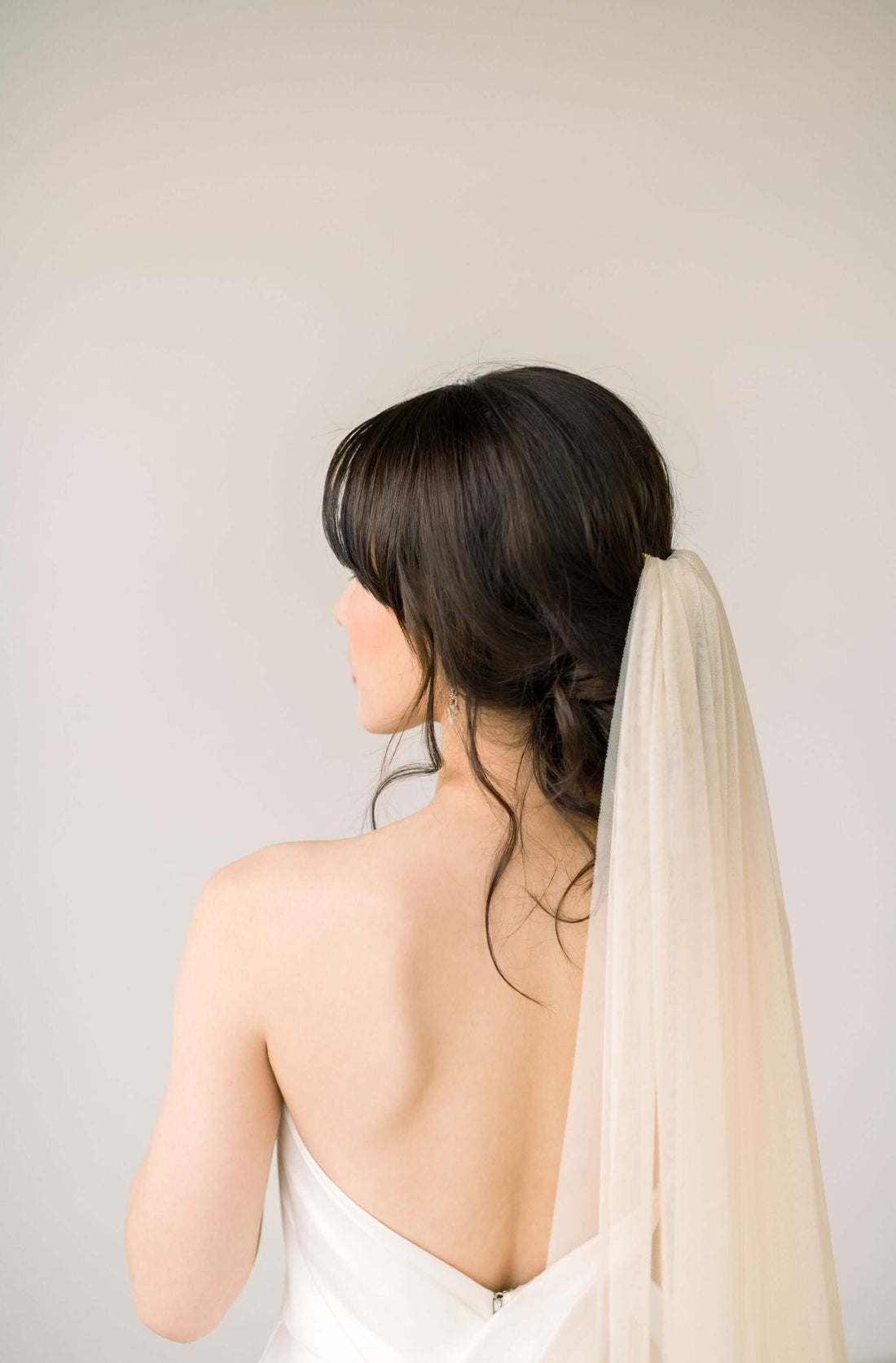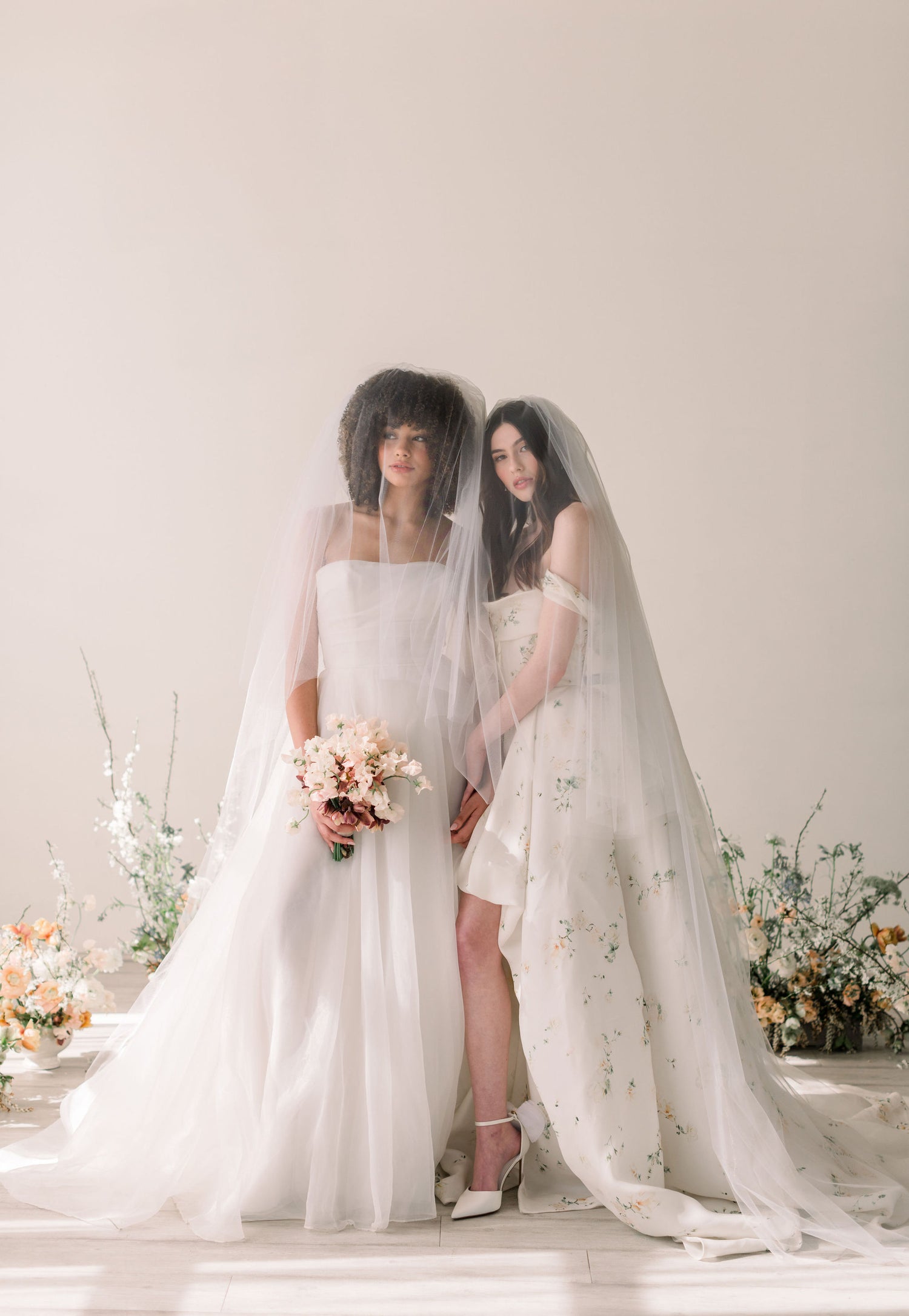
How to choose your wedding veil color
When it comes to selecting a bridal veil, many brides automatically think of classic white or ivory options. However, choosing the right veil color can make a significant impact on your overall bridal look. From subtle shades to bold hues, there are various veil colors to consider that can complement your wedding dress, skin tone, and personal style. In this blog post, we will guide you through the process of choosing the perfect bridal veil color, helping you create a cohesive and stunning ensemble for your special day.
Traditional White and Ivory White and ivory are the classic and most common veil colors. A white veil is a pure and bright option that complements traditional white wedding dresses perfectly. Ivory, on the other hand, has warmer undertones and works well with ivory or off-white dresses. These timeless shades offer a traditional and elegant look that matches most wedding themes and dress styles.
Subtle Tints and Shades If you want a veil color that deviates slightly from the traditional white or ivory, consider subtle tints or shades. Soft pastel hues like blush, champagne, or light gray can add a delicate touch of color to your ensemble while maintaining a romantic and ethereal vibe. These subtle tints can harmonize with your wedding color palette or complement your bouquet, adding a hint of personalized charm to your look.
Bold and Vibrant Colors For the bride who wants to make a bold statement, consider veils in vibrant colors that coordinate with your wedding theme or personal style. A colored veil can add a pop of personality and make a unique fashion statement. You can opt for shades like deep red, royal blue, emerald green, or even black for a dramatic effect. Just ensure that the color complements your skin tone and works harmoniously with your dress and overall wedding color scheme.
Matching or Contrasting Accents Another way to choose your veil color is by considering the accents or details of your wedding dress. If your dress has lace appliques or embroidery in a specific color, consider matching your veil to that color to create a cohesive and harmonious look. On the other hand, if you want to create contrast and make certain dress details stand out, you can choose a veil color that complements but differs from the dress. For example, a white dress with silver embroidery can be paired with a pale blue or blush veil to create an eye-catching contrast.
Skin Tone Considerations Take your skin tone into account when choosing your veil color. Ivory and warmer shades tend to complement warmer skin tones, while pure white and cooler tones can enhance fair or cooler skin tones. Experiment with different veil colors during your dress fittings to see which hues harmonize with your complexion and bring out your natural radiance.
Personal Preference and Style Ultimately, your personal preference and style should guide your veil color choice. Trust your instincts and select a color that resonates with you and makes you feel beautiful. Remember that your wedding day is about expressing your unique personality, and the veil color you choose can be an extension of that self-expression.
Choosing the perfect bridal veil color is an exciting opportunity to customize your wedding look and create a cohesive ensemble that complements your dress, skin tone, and personal style. Whether you opt for traditional white or ivory, subtle tints and shades, bold and vibrant colors, or matching/contrasting accents, consider the factors discussed in this guide to make an informed decision. Embrace the opportunity to add a touch of individuality and personality to your bridal ensemble with the perfect veil color choice that will make you feel like the radiant bride you are on your special day.

